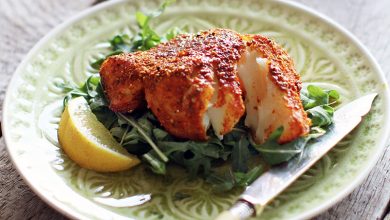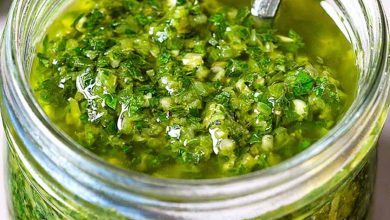Dhal Makhani: Buttery Black Lentil Dhal
Dhal Makhani, a beloved Indian dish, is a comforting, flavorful combination of black lentils (urid dhal) and kidney beans (rajma), simmered in a rich, buttery sauce. It’s a soul-satisfying dish known for its creamy texture, aromatic spices, and complex layers of flavor. This vegetarian delight is perfect for those who enjoy medium-spiced meals with an indulgent touch.
Ingredients:
| Ingredient | Quantity |
|---|---|
| Urid dhal (whole black lentils) | 100g |
| Rajma (kidney beans) | 25g |
| Water | 2 cups + 1 cup |
| Salt | To taste |
| Oil | For frying |
| Cumin seeds | 1 tsp |
| Onion (chopped) | 1 medium |
| Garlic (chopped) | 3 cloves |
| Tomato purée | 2 tbsp |
| Turmeric powder | 1/2 tsp |
| Chilli powder | 1/2 tsp |
| Fresh ginger (grated) | 1 inch piece |
| Green chillies (chopped) | 2-3 |
| Crushed coriander seeds | 1 tsp |
| Butter | 2 tbsp |
| Garam masala | 1 tsp |
| Dried fenugreek leaves (Kasuri methi) | 1 tsp |
| Fresh coriander (for garnish) | A handful |
Allergen Information:
This dish contains no common allergens such as gluten, dairy (except for the butter), or nuts. It is suitable for vegetarians and can be easily adapted to a vegan diet by substituting the butter with a plant-based alternative.
Note: Always check the packaging of ingredients like spices for hidden allergens if you have sensitivities.
Dietary Preferences:
- Vegetarian: This recipe is entirely plant-based and free from animal products, except for butter, which can be substituted for a vegan option.
- Gluten-Free: The ingredients used do not contain gluten, making this dish suitable for those with gluten intolerance or celiac disease.
- Nut-Free: This dish does not contain any nuts, making it safe for people with nut allergies.
Preparation Instructions:
-
Soaking the Lentils & Beans:
Begin by cleaning, washing, and soaking the black lentils (urid dhal) and kidney beans (rajma) separately. Let them soak overnight to ensure they soften properly during cooking. -
Cooking the Lentils & Beans:
After soaking, drain the lentils and beans, then combine them in a pressure cooker. Add 2 cups of water along with a pinch of salt. Close the lid and cook for approximately 25 minutes, or until the beans and lentils are tender and soft. Do not open the pressure cooker until it has cooled and the pressure has fully released. -
Preparing the Spice Mix:
While the lentils and beans are cooking, heat some oil in a large pan. Add cumin seeds and allow them to crackle. Once they do, add the chopped onions and garlic. Sauté the mixture over medium heat until the onions turn golden brown and the garlic becomes aromatic. -
Adding Tomatoes and Spices:
Stir in the tomato purée along with turmeric, chilli powder, grated ginger, chopped green chillies, and crushed coriander seeds. Let this cook for a few minutes until the tomatoes soften and blend with the onions, forming a thick, aromatic paste. -
Simmering the Dhal:
Add the cooked lentils and beans to the pan. Pour in 1 cup of water, and season with salt to taste. Let the mixture simmer on low heat for 15 minutes, stirring occasionally. Ensure that the dhal doesn’t catch at the bottom of the pan. -
Final Touches:
Once the dhal has thickened and absorbed the flavors, stir in the butter, garam masala, and fenugreek leaves (Kasuri methi). These ingredients will give the dhal its signature richness and depth of flavor. -
Garnishing & Serving:
Garnish the dhal with a sprinkle of fresh coriander leaves before serving. The final result will be a beautifully creamy, flavorful dish ready to be enjoyed with steamed basmati rice or warm naan.
Nutritional Information (per serving):
| Nutrient | Amount per serving |
|---|---|
| Calories | 180 kcal |
| Protein | 8g |
| Carbohydrates | 32g |
| Dietary Fiber | 7g |
| Sugars | 4g |
| Fat | 3g |
| Saturated Fat | 2g |
| Sodium | 250mg |
| Potassium | 470mg |
| Vitamin A | 12% of RDI |
| Vitamin C | 6% of RDI |
| Calcium | 3% of RDI |
| Iron | 10% of RDI |
Advice:
-
Soaking Tip: The key to perfectly cooked dhal is to soak the lentils and beans overnight. This softens them and reduces the cooking time, making them easier to cook to perfection in the pressure cooker.
-
Consistency: Adjust the consistency of the dhal by adding more water if you prefer a thinner texture. If you like it thicker, let it simmer a bit longer.
-
Vegan Option: For a vegan version, simply replace the butter with a plant-based alternative such as ghee or olive oil. The dish will still be rich and flavorful.
-
Spice Level: You can easily adjust the level of heat by reducing or increasing the amount of green chillies or chilli powder based on your preference.
-
Serving Suggestions: Dhal Makhani is traditionally served with Indian flatbreads like naan or roti, but it also pairs wonderfully with steamed rice, making it a complete and satisfying meal.
Conclusion:
Dhal Makhani is the epitome of comfort food in Indian cuisine. Its rich, creamy texture combined with the warmth of spices and the satisfying bite of black lentils and kidney beans creates a dish that’s both indulgent and nourishing. Whether you enjoy it with rice or flatbreads, this dish is sure to delight your taste buds and leave you craving more. The best part? It’s entirely vegetarian and can easily be adapted to suit various dietary needs. With a medium level of spice and the depth of flavor from slow cooking, Dhal Makhani is the perfect addition to any meal!




